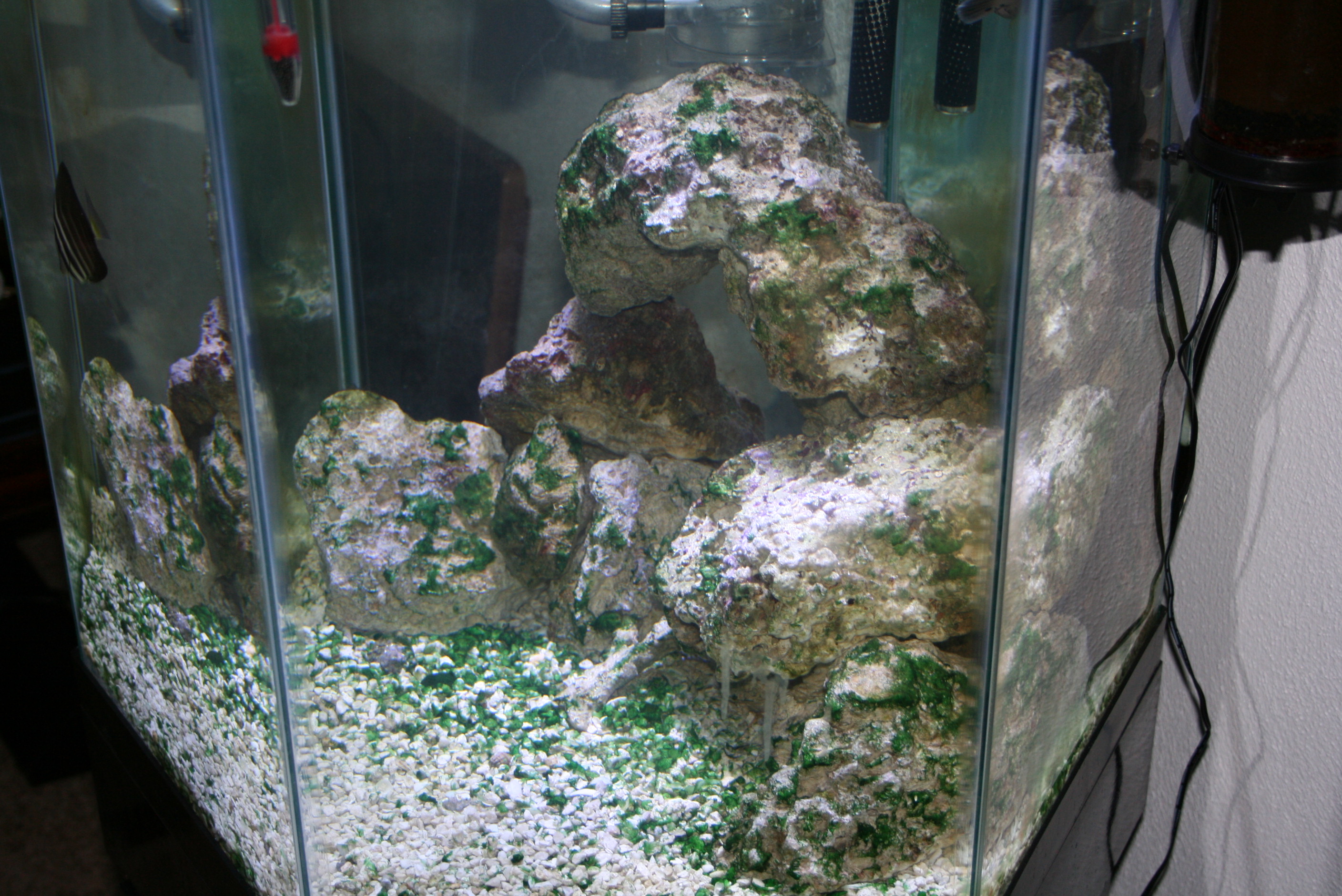helpbrady
New Member
Hello everyone!
I have a 35g hex FOWLR with a serious blue-green algae or cyano problem! The tank is about 5 months old with about 20 lbs of live rock and 1-1/2" crushed coral substrate. Started out with running just a mechanical filter (pengiun 200) and T8 15w 8000k flourescent light. It was doin good for a while until a couple months ago some green algae started appearing. Researched it alot and found out it was cyano, and now its everywhere! So, to correct this problem I researched and talked to so called "experts" haha and this is what I did: 1.) Tried the 3 days of no light which killed most of it but it grew back even worse. 2.) Bought the new Marineland Reef capable LED lighting because I was told I didnt have the right spectrum of light. 3.) Tested for high phosphates (app. 2.0ppm) so I bought a Phosban Reactor and put in some BRS GFO media. Now its at or about 0ppm and again I did the 3 days no light which same result. 4.) Did 20% water changes with RO once a week and a couple 50% changes; vacuuming about 1/3 of the substrate each time. 5.) Bought a circulator pump (700gph) because i was told i didn;t have enough flow. ALL this to no avail now its everywhere.
Feeding every other day: brine, squid, krill all frozen (hense phosphate problem haha)
Water Params:
Temp: 76
Salinity: 1.022... was 1.024 until the latest batch of RO water
PH: 8.2
Amm: 0
Nitrite: 0
Nitrate: 15-20ish
Phos: near 0
Livestock:
Dogface puffer (I know they will outgrow the tank)
Sailfin tang
clownfish
watchman goby
camel shrimp
brittle star
Equipment:
Marineland Reef Capable LED Lighting 18"
Marineland Penguin 200 w/biowheel
Phosban Reactor w/BRS GFO media
Seaclone protien skimmer (looking for better skimmer)
Aqueon Circulation pump 700gph

Looks much worse in person!!!
Anything to help me out I would REALLY appreciate!!!!
I have a 35g hex FOWLR with a serious blue-green algae or cyano problem! The tank is about 5 months old with about 20 lbs of live rock and 1-1/2" crushed coral substrate. Started out with running just a mechanical filter (pengiun 200) and T8 15w 8000k flourescent light. It was doin good for a while until a couple months ago some green algae started appearing. Researched it alot and found out it was cyano, and now its everywhere! So, to correct this problem I researched and talked to so called "experts" haha and this is what I did: 1.) Tried the 3 days of no light which killed most of it but it grew back even worse. 2.) Bought the new Marineland Reef capable LED lighting because I was told I didnt have the right spectrum of light. 3.) Tested for high phosphates (app. 2.0ppm) so I bought a Phosban Reactor and put in some BRS GFO media. Now its at or about 0ppm and again I did the 3 days no light which same result. 4.) Did 20% water changes with RO once a week and a couple 50% changes; vacuuming about 1/3 of the substrate each time. 5.) Bought a circulator pump (700gph) because i was told i didn;t have enough flow. ALL this to no avail now its everywhere.
Feeding every other day: brine, squid, krill all frozen (hense phosphate problem haha)
Water Params:
Temp: 76
Salinity: 1.022... was 1.024 until the latest batch of RO water
PH: 8.2
Amm: 0
Nitrite: 0
Nitrate: 15-20ish
Phos: near 0
Livestock:
Dogface puffer (I know they will outgrow the tank)
Sailfin tang
clownfish
watchman goby
camel shrimp
brittle star
Equipment:
Marineland Reef Capable LED Lighting 18"
Marineland Penguin 200 w/biowheel
Phosban Reactor w/BRS GFO media
Seaclone protien skimmer (looking for better skimmer)
Aqueon Circulation pump 700gph
Looks much worse in person!!!
Anything to help me out I would REALLY appreciate!!!!
